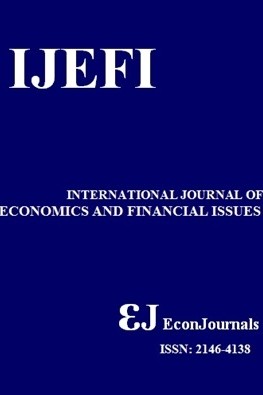Quasi-States and Autonomies of Northeast China as the Instrument of Ensuring Economic Stability of Japan (Based on the Materials of the American Mass Media the 1930s)
Quasi-States and Autonomies of Northeast China as the Instrument of Ensuring Economic Stability of Japan (Based on the Materials of the American Mass Media the 1930s)
Northeast China, autonomy, quasi-state economic policy of Japan, mass media,
- Başlangıç: 2011
- Yayıncı: İlhan ÖZTÜRK
Pavel P. BARANOV, Alexey Y. MAMYCHEV, Alexey İ. OVCHİNNİKOV
Funds Management as Relation System in Business Company for Highly Effective Finance Administration
Natalia B. Golovanova, Elmira A. Asyaeva, Sofia A. Gavrilenko, Alla V. Temirkanova, Alexandr A. Sokolov
Vladimir P. KAZACHİNSKİİ, Galina V. STEPANOVSKAYA, Zarema M. KHASHEVA, Oleg L. SHULGATYİ
Analysis on Investment of Small and Medium Entrepreneurship
Olga V. Kiseleva, Iuliia S. Pinkovetskaia
Human Resource Management in the Context of the Global Economic Crisis
Natal’ya V. BULEY, Tatiana S. DEMCHENKO, Sergey A. MAKUSHKİN, Mikhail V. VİNİCHENKO, Aleksandr V. MELNİCHUK
Macroeconomic Trends and Features of Regional Economy Development in the 21st Century
İnna L. LİTVİNENKO, Zhibek S. SYZDYKOVA, Sergey N. NOVOSELOV, Natalya N. Novoselova, Maria A. Gureva, Vitaly A. Tupchienko
Banks: Old Actors of the New Economy
Marianna G. Abramova, Oxana N. Vasilieva, Marina M. Milovanova, Anna V. Popova, Yuri N. Yudenkov, Maxim S. Safonov
Innovative Activity of Financial and Industrial Groups
Marina N. Rudenko, Ludmila V. Goloshchapova, Oksana V. Savvina, Andrey A. Zamkovoy, Natalia V. Chernikova, Olga G. Andryushchenko
The Global Financial Crisis and the Banking System of Russia: Problems and Prospects
Alan K. KARAEV, Anna İ. GUSEVA, Anna A. DROZDOVA, Olga A. TKACHEVA, Tatyana M. ROGOVA
Functioning of Innovative Territorial Clusters
Maria A. Gureva, Svetlana V. Lyubimtseva, Tatiana N. Tukhkanen, Olga Yu. Lyubimtseva, Lyudmila M. Simonova, Eugeny P. Kolpak
